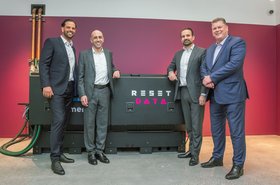The Commonwealth Bank of Australia, also known as CBA or CommBank, is set to complete its cloud migration by May of this year.
As reported by iTNews, the CBA has been able to halve its migration project timeline through the use of AI.
Earlier this year, the CBA signed a five-year agreement with Amazon Web Services (AWS) that would see the company remain as the bank's preferred cloud provider, given its ongoing cloud migration project with AWS.
According to the CBA's chief data and analytics officer, Andrew McMullan, the bank's use of AI agents has significantly sped up its move to AWS. Previously expected to be an 18-month project, the bank is now predicting that it will complete its data migration by May 2025, cutting the timeline in half.
In September 2024, the CBA revealed plans to use AWS' EC2 P5 instances with Nvidia H100s in the cloud giant's Sydney region to create an "AI factory." At the recent AWS Data and AI Roadshow in Sydney, McMullan said that this AI Factory had "empowered all of [its] engineers and AI scientists to embed AI and generative AI capabilities in their day-to-day activities.”
“By providing the whole enterprise with access to this compute... has unlocked the ability to conduct much more experimentation, safe testing, and the development and deployment of AI everywhere across the enterprise.”
All of which McMullan said has accelerated the migration project.
The update on the cloud migration shortly followed news that CBA was cutting jobs in its technology team. iTNews reported on March 6 that up to 164 roles could be cut from the Eveleigh and Harbour Street CBA sites in Sydney.
The CBA told iTNews: "Like all organizations, we regularly review how we are organized to deliver the best experiences and outcomes for our customers. That means some roles and work can change. Our focus is on providing our growing team with the right skills for the evolving work. Our priority is always to redeploy or reskill for a new role or opportunity wherever possible."
In 2018, the CBA was forced to apologize for failing to disclose the loss of 12 million user records in 2016, following an investigation that revealed the tapes on which the information was stored were mishandled by the subcontractor paid to destroy them.







